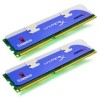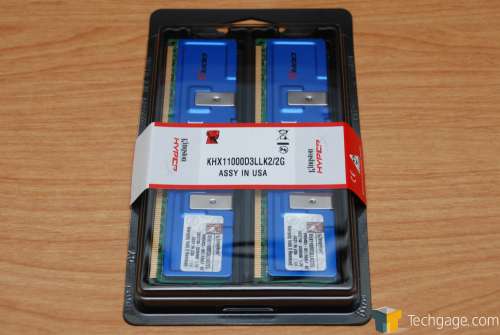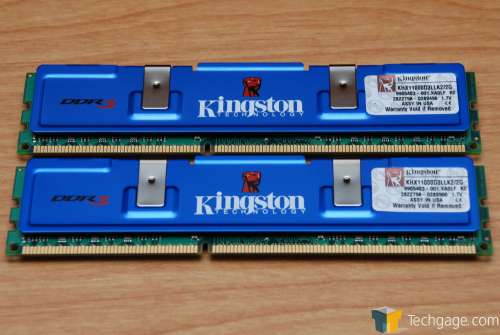- Qualcomm Launches Snapdragon 4 Gen 2 Mobile Platform
- AMD Launches Ryzen PRO 7000 Series Mobile & Desktop Platform
- Intel Launches Sleek Single-Slot Arc Pro A60 Workstation Graphics Card
- NVIDIA Announces Latest Ada Lovelace Additions: GeForce RTX 4060 Ti & RTX 4060
- Maxon Redshift With AMD Radeon GPU Rendering Support Now Available
Kingston 2GB HyperX DDR3-1375 CL7

Last Friday, we took a look at one of the first DDR3 kits on the market, OCZ’s DDR3-1333 Platinum. This week, we are continuing that theme with Kingston’s DDR3-1375 CL7, also one of the first kits available. How does this one compare to our OCZ kit? Read on to find out.
Page 1 – Introduction
|
|
If you happened to have read our OCZ review last week, then you are probably aware that I am not huge on DDR3… at least yet. At this point in time, the performance gains are in no way worthy of the serious premium that these kits are asking. That said, until DDR3 goes down in price and becomes more a more viable solution to the masses, we will not be giving any DDR3 kit an overall rating, simply because it would be dragged down due to the price, which is unfair.
Instead, we are taking a look at each DDR3 kit as they are, and for those who do want to live on the bleeding edge of computing. While DDR3 isn’t groundbreaking, it is technically faster than DDR2, so diehard computing enthusiasts might want to make the move.
Like our kit last week, Kingston’s DDR3-1375 was one of the first kits on the market, and is the first one we received in our labs back in May. Compared to OCZ’s kit, Kingston’s has a few advantages. First, it’s DDR3-1375 instead of DDR3-1333, although we will be testing at DDR3-1333 for the sake of simplicity and since the kit was able to overclock beyond that stock speed.
Second, Kingston must’ve found a great batch of chips, because their kit not only had higher speeds, but higher speeds at lower voltages, 1.7v to be exact. Because of this, apples to apples, Kingston should have the overall advantage. That is yet to be seen though. For now, let’s look at the modules themselves, before moving onto our testing methodology and ultimately, our testing results.
Like all of Kingston’s HyperX modules, these ones arrive in a tight plastic blister pack, which keeps the modules safe during shipment and also shows the modules off. It’s a solid package design, because even if it’s dropped, the modules will remain safe.
One thing to note, is that the DDR3 heat spreader design has been ended, and replaced with a new one. However, I have yet to see these available on the market, but I assume all future models will incorporate them.

With that, there is no reason to delve into these specific spreaders that we have, since they are being replaced, but overall their efficiency is good and they look sharp overall. I’ve always loved the color Kingston has used and am glad that the future modules will retain that.
Testing methodology and overclocking is up next, followed by our testing results.
|
|
Support our efforts! With ad revenue at an all-time low for written websites, we're relying more than ever on reader support to help us continue putting so much effort into this type of content. You can support us by becoming a Patron, or by using our Amazon shopping affiliate links listed through our articles. Thanks for your support!







